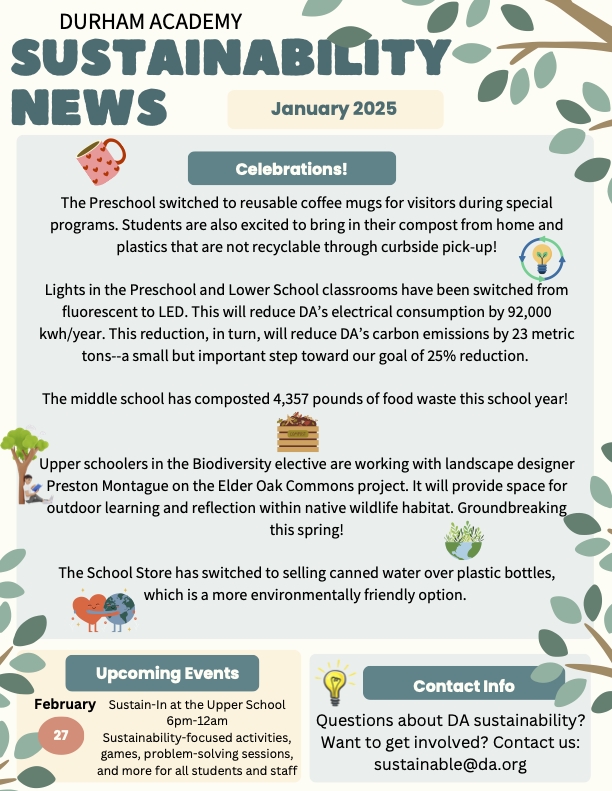Our bodies and our sanity are under attack following recent rains. Slap as we may, it’s hard to beat the mosquitos. There are lots of companies ready to step in (for a hefty price) with expensive applications of “mosquito spray.” Unfortunately, there’s no such thing as a specialized chemical application for mosquitos; the spray kills fireflies, butterflies, native bees, honeybees–all kinds of insects that we like to see and need to have in our environment.
Continue readingMay 12
Carpooling to School
Getting children to school and back is a big, daily challenge for for most parents and caregivers of DA students. Moreover, the commute generates 25% of Durham Academy’s carbon emissions. There can be benefits, of course, of regular time together in the car, but most adults are enthusiastic about reducing driving time.
What do people who already carpool to DA say about the experience?
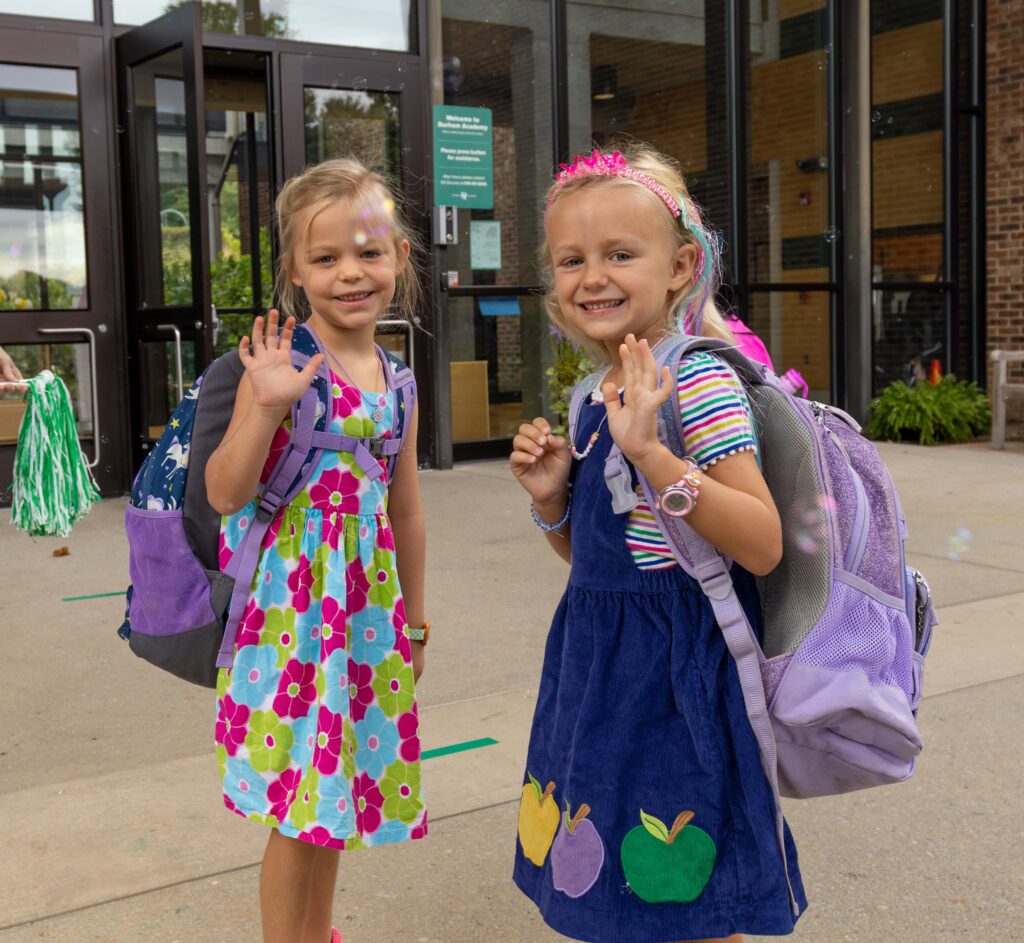
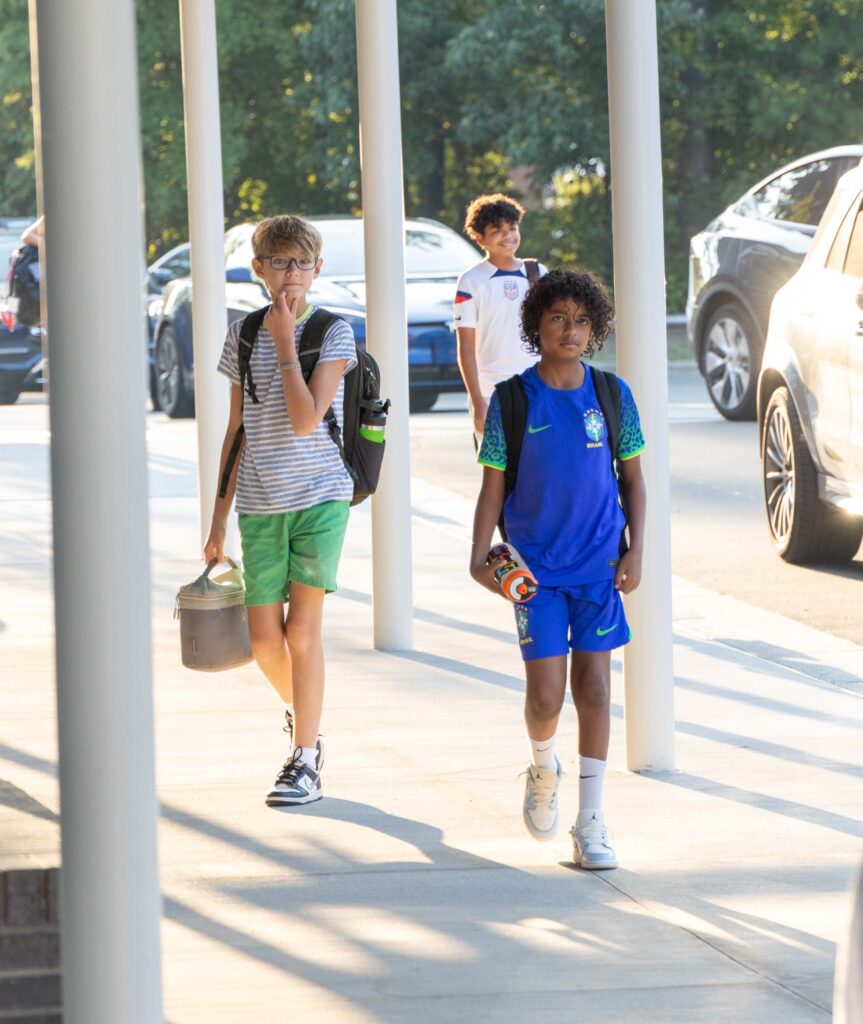
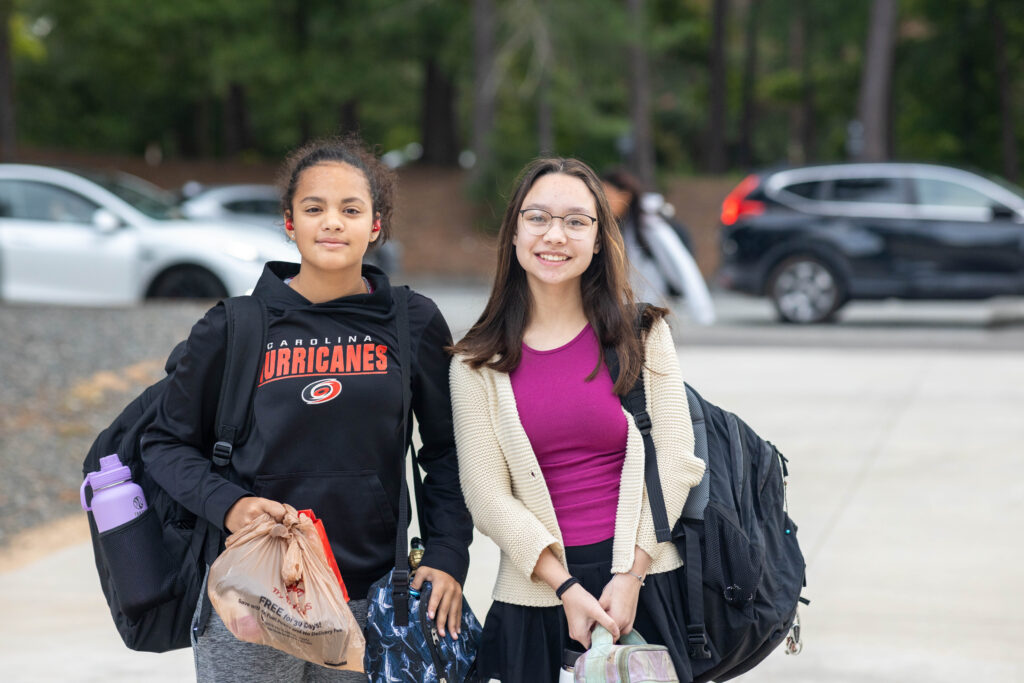
Apr 30
Sustainability in Action
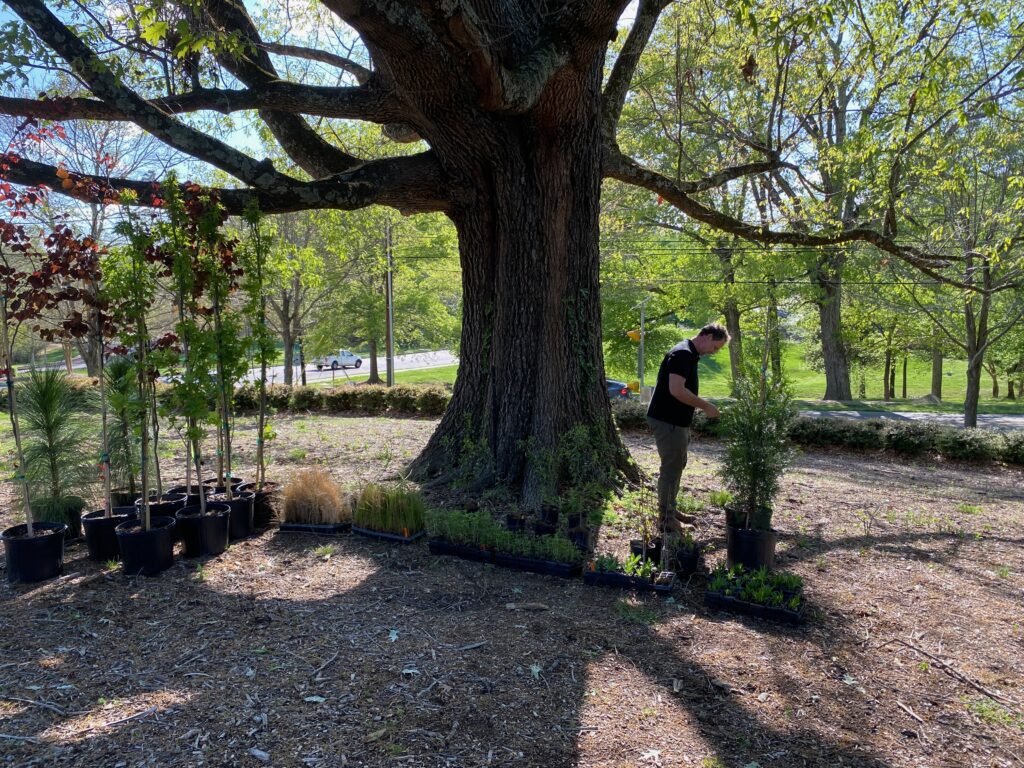
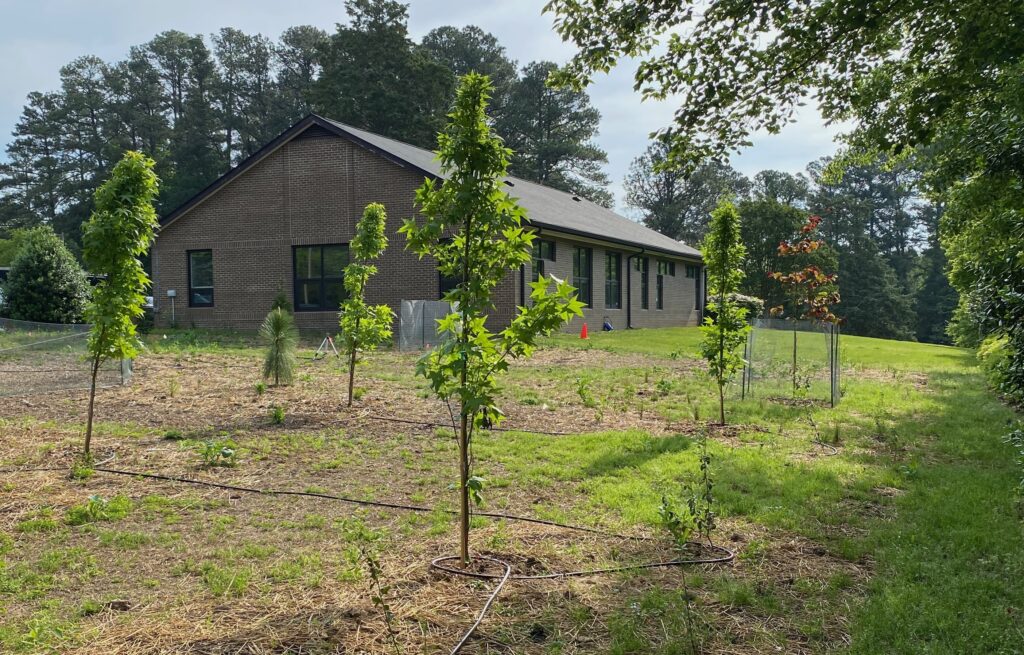
Saturday, April 12th was a big day for DA Sustainability! After months of mulching and prep work, the whole school was invited to help plant a half acre of trees, shrubs, grasses, and other plants. We began by spreading out topsoil for the garden beds. The weather was cool and cloudy, and there was lots of mud from recent rains, but we were glad it wasn’t too hot and or actively raining. The mud, despite messing up my sneakers, made it easier to dig holes for the plants.
Continue readingApr 14
Hands in the soil, faces turned toward the future
Groundbreaking on the Elder Oak Commons
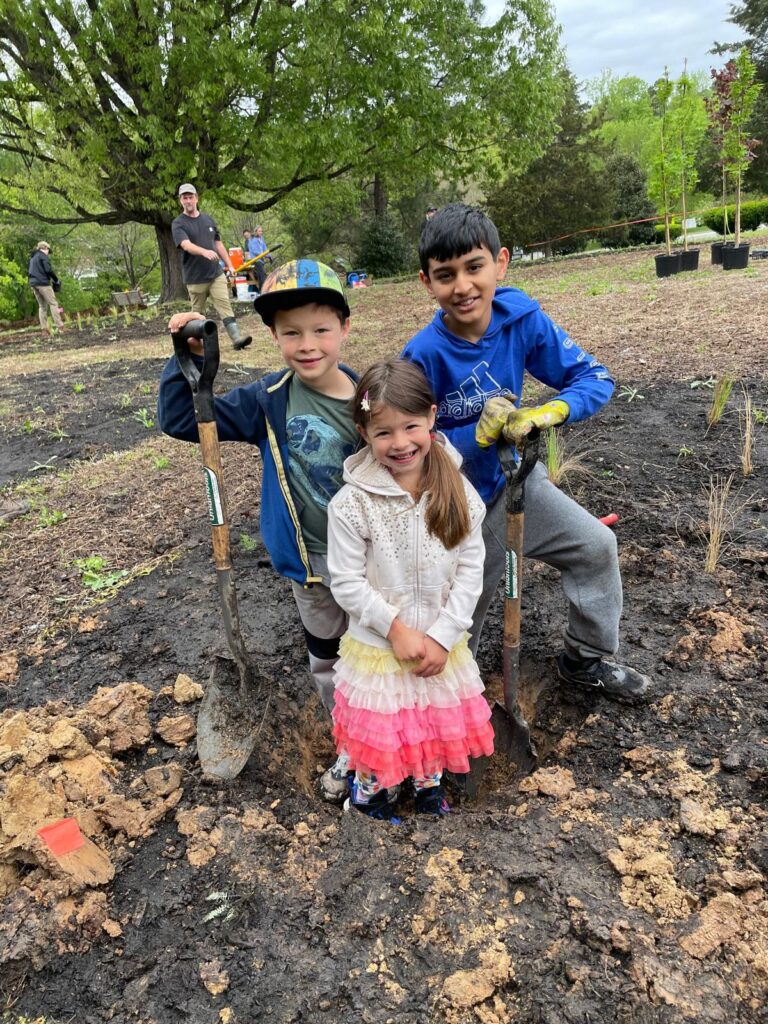
Photo Credit: Kelly Teagarden
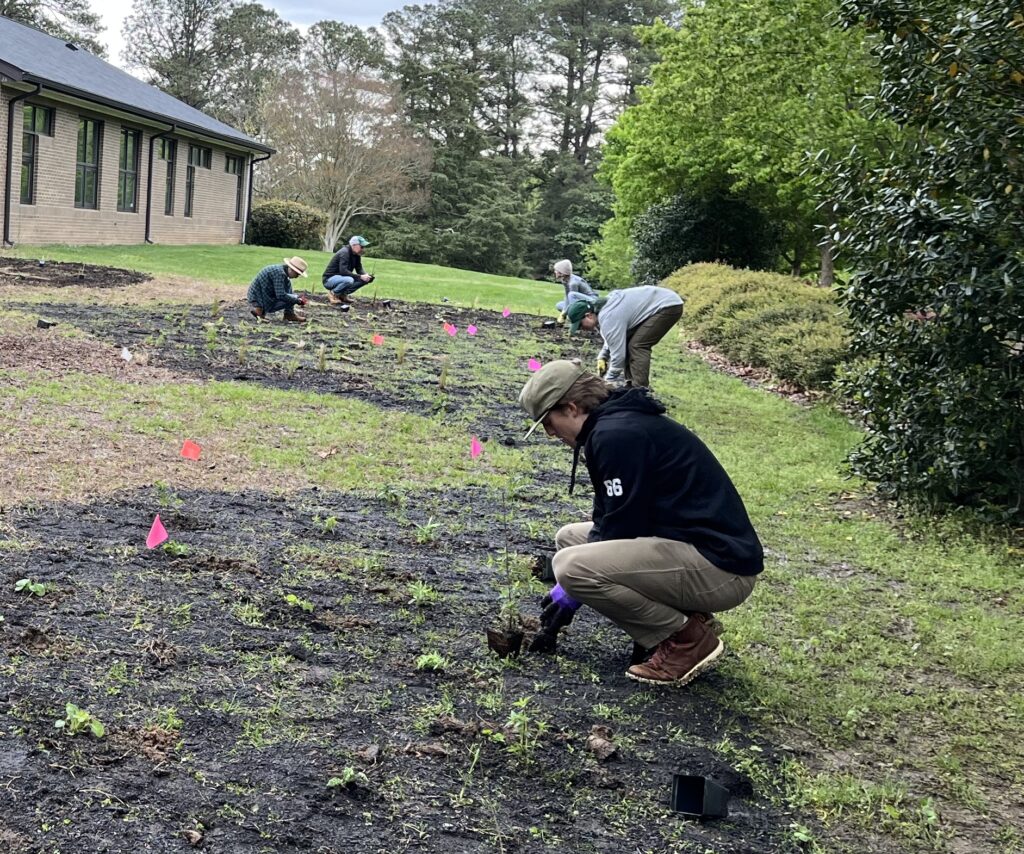
Photo credit: Ann Leininger
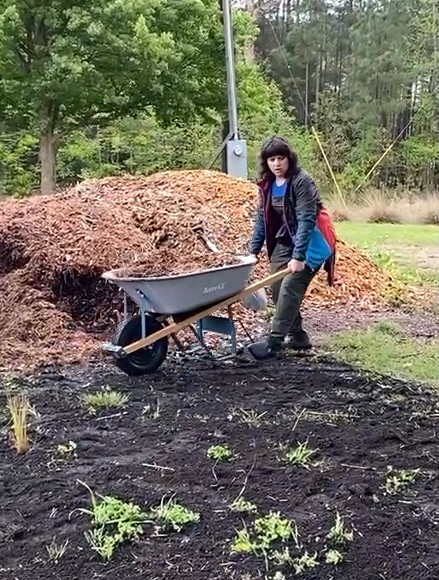
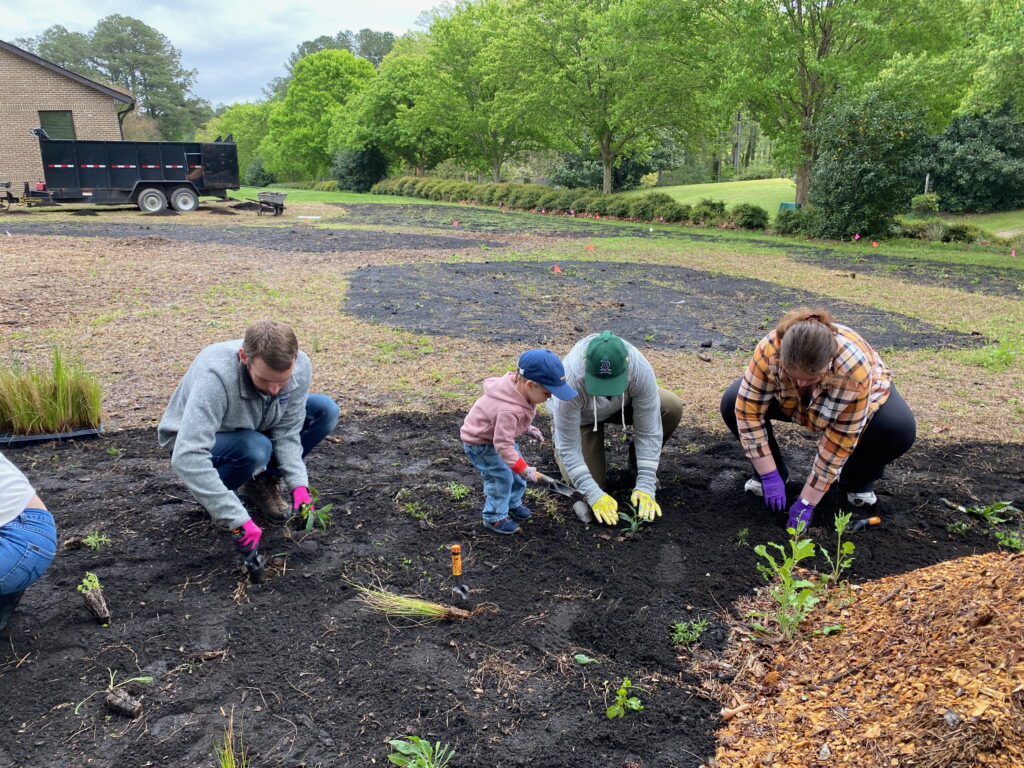
Photo Credit: Tina Bessias
Editor’s note: On Saturday, April 12, eighteen volunteers from the DA community were joined by landscape designer Preston Montague and Extension Master Gardener student Kevin Westfield to plant five hundred shrubs, trees, grasses and other native plants at the corner of Pickett and Ridge Rds. This work began the long-planned conversion of a grassy expanse to a biodiverse environment on campus. Upper School Director Lanis Wilson participated and wrote this reflection in his weekly newsletter, Yo La Tengo.
Good Sunday Morning all and Chag Pesach Sameach to those celebrating Passover this weekend.
I hope this message finds you enjoying this pleasantly cool weekend. As the sun filters through the newly green canopy this morning, I find myself reflecting on yesterday’s Elder Oak Commons planting event. What a profound experience it was to work alongside fellow faculty and their families, our hands in the soil, planting native plants and saplings that many of us may never see reach their full majesty.
Continue readingFeb 17
Sustain-in 2025: You’re invited!
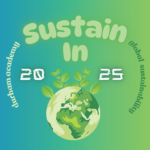 Thursday, February 27
Thursday, February 27
6pm-12am
Upper School STEM & Humanities Building
No school for students next day! Parent-teacher conferences are Friday, February 28.
Have you ever wondered what DA looks like under starlight? Do you want an opportunity to connect to a community of people with brilliant new ideas for ways to care for the world around us?
The Sustain-In is the perfect place to answer these questions, and so many more you haven’t even asked yet! The Student Government Sustainability Committee invites ALL members of the DA community to learn and play together, create art, solve problems, and talk to people at DA and across the world about sustainability. Come for all or any part of the time.
Who can participate?
Continue readingDec 04
The Business of $ustainability

1-Day Seminar for Upper School Students
Friday, January 17, 2025
Apply here. Deadline is January 8.
Why is sustainability such a center of innovation and entrepreneurship? How do people make money in this field? How are carbon emissions calculated, and how do organizations like DA try to reduce them? These topics and more will be addressed in this special, one-day learning experience that is open to all Upper School students. There will be particular attention to offsets: does paying to plant trees or develop renewable energy systems legitimately reduce a business’s carbon emissions?
Continue readingNov 21
Gratitude
In this season of giving thanks, I would like to express gratitude to many people in the DA community.
I’m personally grateful to those who pass me in cars when I’m riding my bike on Pickett Rd. I hear lots of people say how dangerous it is to ride there, but in fact, I rarely have even a mildly annoying experience. Thanks to everyone who gives me space on the road!
Professionally, I believe Sustainability offers hope for the future, but it requires change in the present. That’s not always a welcome ask in the midst of our fast-paced everyday activities in school, yet the support is overwhelming.
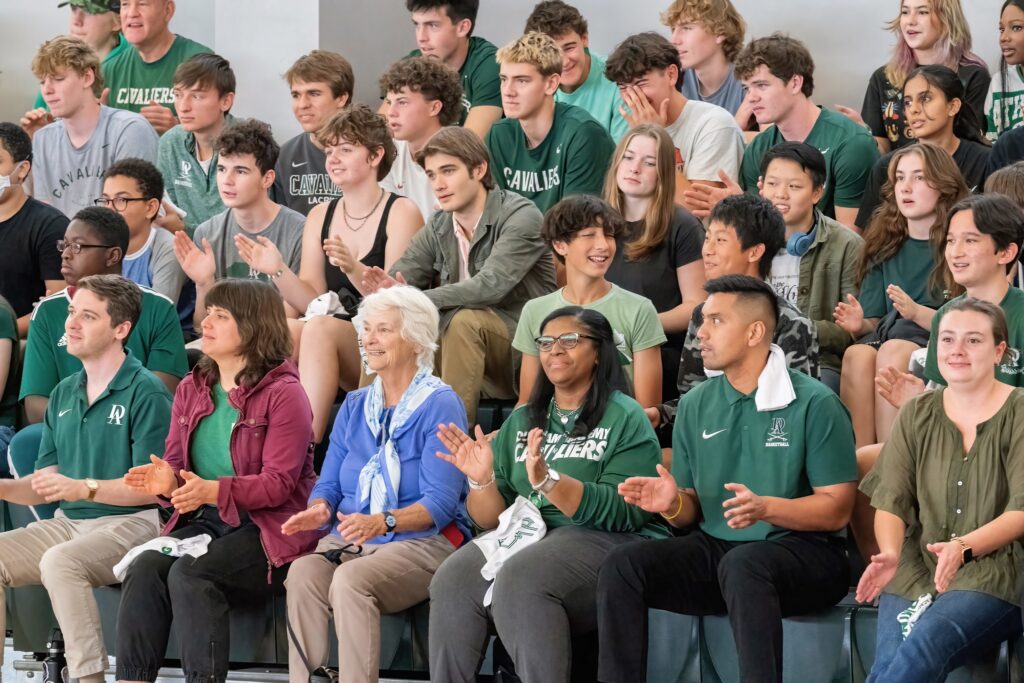
Here are some of the many people I’m grateful to:
Continue readingNov 20
Students Speak at Public Hearing about Development on Pickett Road
By Evan Register ’25 and Angus Cook ’25
Editor’s Note: The authors made a statement at the November 12 Planning Commission hearing about a proposed apartment complex across Pickett Road from Durham Academy Upper School. Also speaking for DA were Adam Braude, CFOO; Marty Walkowe, Associate Director of Security; Andrea Caruso, Environmental Science Teacher and Upper School Sustainability Leader; and Tina Bessias, Sustainability Coordinator. Members of the public, including neighbors and wildlife enthusiasts, also spoke at the hearing. The Planning Commission voted 8-2 against the proposal. The City Council will hold its own hearing and make the final decision early in 2025.
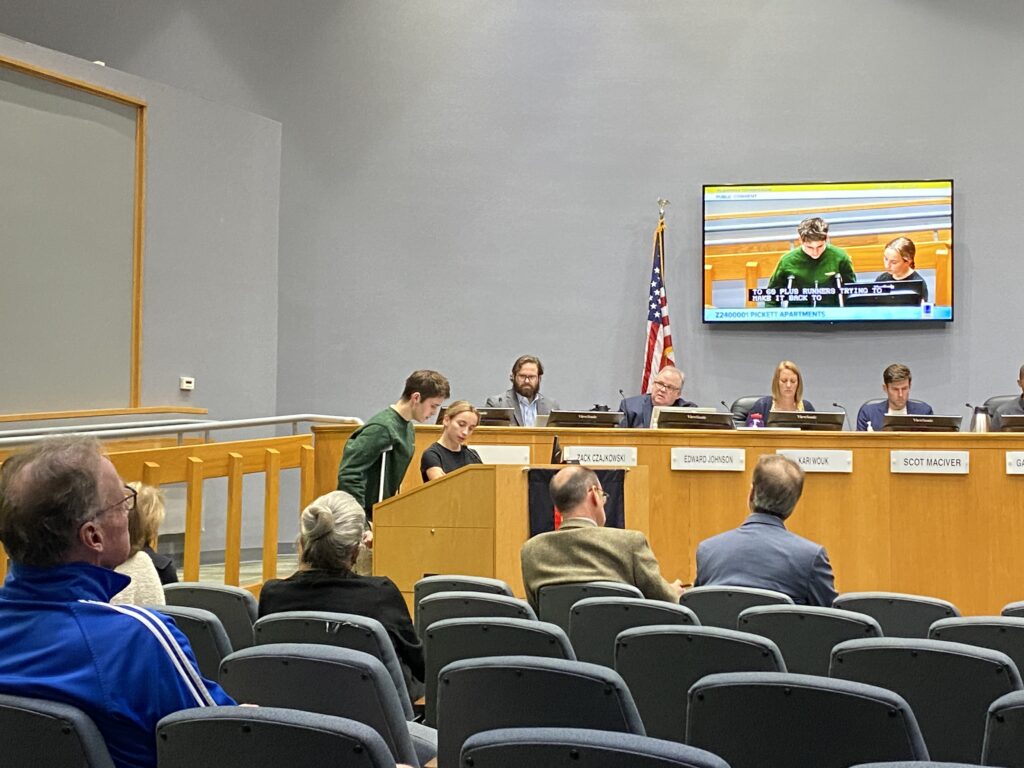
It was an honor to be asked by Middle School Cross Country Coach Hall to speak at the City Hall meeting. Sandy Creek means a lot to us and we know that the trail has had a lasting impact on countless Durham Academy runners in past years. Sandy Creek trail is the most important trail for the cross country and distance track teams, both of whom use it in the summer, fall, winter, and spring. It’s an incredible privilege to have Sandy Creek right at our fingertips. We run on it nearly every day, and have a new appreciation for it after almost losing it to development plans.
Continue readingOct 21
The Lower School Gym in a New Light
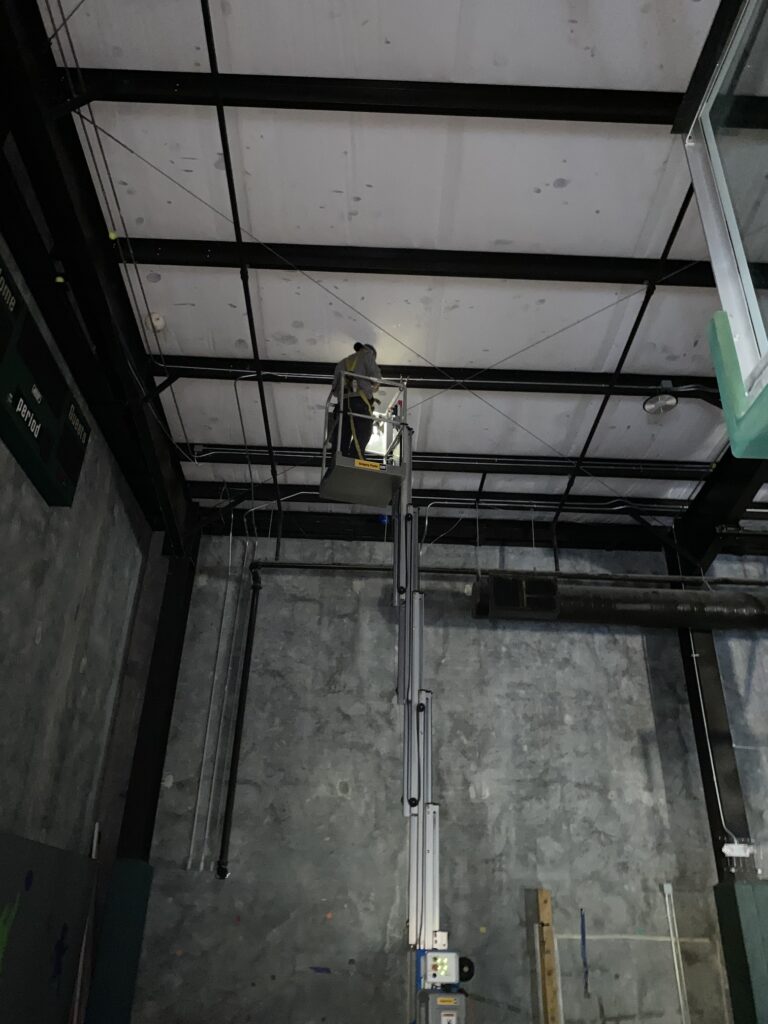
Today, there is an electrician named Luis Ossa working in a lift to remove giant antique light bulbs– 400 watt metal halide lamps–from the ceiling of the Lower School Gym. He is working in the dark to replace those lights with modern, efficient LEDs. And while he’s up there, he’s clearing out volleyballs and other items long stuck between beams.
Continue reading
